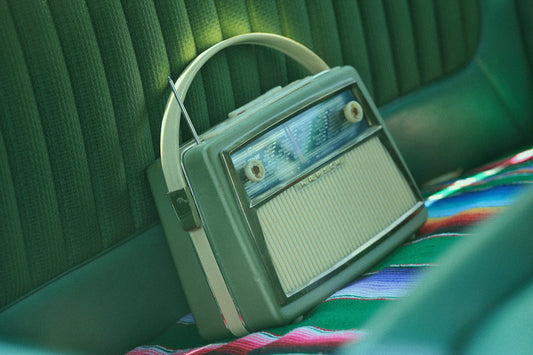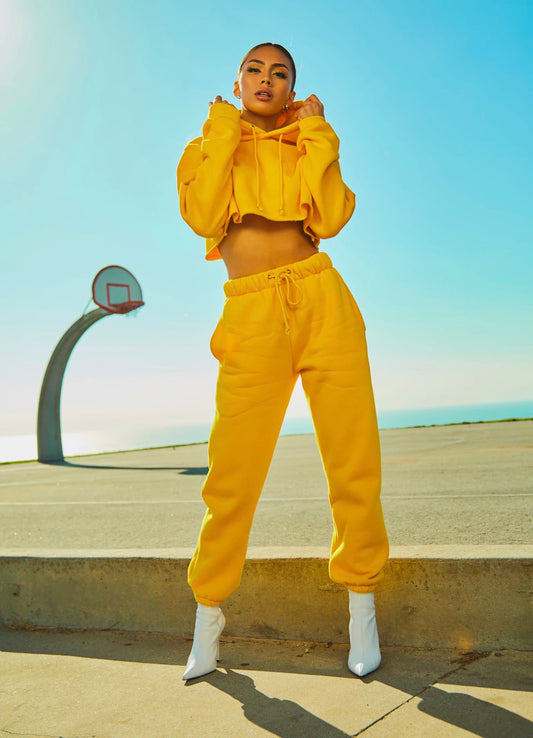In the vibrant world of fashion, few styles carry as much charm and nostalgia as vintage sportswear. This unique blend of functionality and style has continued to evolve over the decades, making its mark not only in functional athletic wear but also in mainstream fashion. From the classic looks of the 1920s to today’s athleisure trends, vintage sportswear has a rich history that speaks to the evolution of our approach to comfort, style, and self-expression. In this article, we’ll delve into the defining features of vintage sportswear across different decades, examining how styles have transformed and influenced our modern wardrobe.
The 1920s: The Birth of Sportswear
The 1920s marked a pivotal turn in fashion, with the emergence of a new casual aesthetic. Sportswear became a staple for the modern woman, reflecting changing attitudes towards leisure and activity. Emblematic of this change were garments like the flapper dress and knitted sweaters, designed to merge comfort with style. The materials used were lightweight, allowing for freedom of movement while still maintaining an element of luxury.
Key Features of 1920s Sportswear
- Use of breathable fabrics such as cotton and linen
- Incorporation of stripes and polka dots for playful patterns
- Loose-fitting garments for ease of wear
- Sporting influences seen in dresses for leisure activities such as tennis and golf
This decade laid the groundwork for the sportswear movement, demonstrating that athletic wear could be both functional and fashionable—a core principle that remains today.
The 1930s: The Advent of Athleticism
As the world plunged into the Great Depression, a more pragmatic approach to fashion emerged. Sportswear in the 1930s evolved further with a focus on American athleticism. The introduction of Hollywood into the mix meant that movie stars began to influence fashion, pushing more casual and sporty styles to the forefront. Brands began to create garments that mirrored the active lifestyles of celebrities.
Key Features of 1930s Sportswear
- Increased use of wool and heavier fabrics for durability
- Rise of fitted jackets and high-waisted trousers demonstrating an athletic silhouette
- Footwear beginning to reflect functionality, with the popularity of canvas sneakers
- Designs started to incorporate character and fun, with logos appearing on more casual items
The sportswear of the 1930s became a statement of personal style, paving the way for greater acceptance of active lifestyles in everyday wear.
The 1940s: Utility Meets Style
During World War II, fashion had to adapt to the challenges of rationing and material shortages. The 1940s saw the rise of utility fashion, but sportswear maintained its momentum. This was the decade where women’s sportswear truly took off, with pieces designed for functionality but increasingly seen in everyday wear. The introduction of military-inspired elements, like bomber jackets, started to influence high fashion.
Key Features of 1940s Sportswear
- Utilitarian design with an emphasis on function over extravagance
- Classic pieces like shirt dresses and cargo pants becoming more mainstream
- Muted colors paired with practical embellishments enhancing the utilitarian ethos
- Focus on multi-purpose clothing that allowed for a quick transition from sporting to casual outings
As the world recovered, so too did the styles, paving the way for the post-war exuberance that would define the following decade.
The 1950s: Sportswear Becomes Fashionable
The 1950s witnessed the explosion of the leisure culture; sportswear became firmly established as high fashion. Iconic figures like Audrey Hepburn and Marilyn Monroe began sporting pieces that merged luxury with functionality. Fabrics became bolder, and styles began to entwine with the emerging youth culture—the rise of the teenager as a fashion influencer.
Key Features of 1950s Sportswear
- Technological advancements in fabric production leading to new, vibrant materials
- A return to more tailored fits, with skirts and shorts adorned with beloved patterns and motifs
- Footwear trends leaning towards classic tennis shoes and loafers, merging comfort with upscale style
- Key icons influencing trends led to the blurring lines between formal and casual wear
In this vibrant decade, sportswear embraced its place in luxury, creating a perfect blend of chic and comfort.
The 1960s: Revolution and Reinvention
The 1960s brought with it a cultural revolution that permeated fashion. The era was marked by an explosion of creativity and individuality. Vintage sportswear evolved to reflect youth culture’s desire for freedom—think bold patterns, psychedelic prints, and more relaxed cuts. The decade also saw the emergence of the designer sportswear category.
Key Features of 1960s Sportswear
- Graphic tees and bold prints making a statement
- Explosion of colour and patterns embraced by the youth
- Choice of oversized silhouettes offering a more relaxed fit
- Increased visibility of sportswear in pop culture through musicians and film stars
Not only did this decade transform sportswear into a medium for self-expression, but it also paved the way for athletic wear to be blended effortlessly with everyday styles.
The 1970s: The Rise of Athleisure
The 1970s marked a significant transition in sportswear with the advent of athleisure. Gym culture boomed, and casual athletic wear—such as tracksuits—gained popularity. This decade saw the integration of functionality with leisure, creating a stylish yet practical wardrobe staple. Brands began to experiment with synthetic fibres, enhancing the performance aspect of garments.
Key Features of 1970s Sportswear
- Tracksuits became an iconic representation of this trend, often worn both on and off the field
- Use of microfibres promoting hygiene and moisture management
- Bold colour combinations and striking contrasts became a signature style
- Increase in branding, with iconic logos becoming part of the fashion statement
Thus, the 1970s ushered in a new era where sportswear began to be recognised as daily wear and not relegated to the gym.
The 1980s and 1990s: The Era of Branding and Culture
The 1980s and 1990s saw sportswear firmly entrench itself in streetwear culture. Athletes began to gain celebrity status, and brands like Nike and Adidas leveraged this to create highly desirable collections. High fashion began to embrace street culture, leading to a revolutionary change in how sportswear was perceived.
Key Features of 1980s and 1990s Sportswear
- Classic logo-driven designs dominating the scene, with brands becoming cult favourites
- Streetwear aesthetics paved the way for oversized silhouettes and matching sets
- Bold colour palettes coupled with iconic patterns becoming popularised through music and popular culture
- Casual footwear emerged as a significant element of everyday style, thanks to influences from hip hop and skate culture
This transformative period positioned sportswear as a status symbol in contemporary fashion—bridging the gap between functionality and luxury.
The 2000s: A New Millennial Approach
As the world approached the new millennium, sportswear continued to adapt, enhancing the notion of athleisure. The rise of the Internet and globalisation allowed for endless inspiration and trends to emerge. Sustainability began to make waves in fashion, leading to the creation of sportswear that was not only aesthetically pleasing but also environmentally conscious.
Key Features of 2000s Sportswear
- Introduction of eco-friendly fabrics and sustainable practices
- Variations of leggings and joggers becoming a staple in everyday wardrobes
- Casual chic took centre stage, with layered looks appealing to many
- Growth of designer collaborations with sports brands, elevating streetwear aesthetics
This decade initiated an ever-growing interest in sustainable practices while redefining our relationship with comfort in style.
Modern Day Vintage Sportswear: A Fusion of Timelessness and Trends
Today, vintage sportswear is not merely about nostalgia—it's about appreciating the craftsmanship, the artistry, and the story woven into each garment. The recent revival of athleisure continues to celebrate the luxurious aspect of sportswear, marrying form and function in a way that caters to our fast-paced lives. Moreover, the sustainability movement emphasised a need for conscious consumerism, encouraging brands to produce ethically made sportswear that respects the planet.
Why Vintage Sportswear Matters Today
- Confers a sense of individuality and character compared to mass-produced clothing
- Offers an eco-friendly choice; by choosing second-hand, we contribute to sustainability
- Allows for a unique blend of luxury and casual wear—perfect for any occasion
- Bridges the gap between sporting activities and streetwear, showcasing versatility
Vintage sportswear represents not just a clothing choice but a lifestyle—one that is rooted in comfort, style, and a deep appreciation for the past while looking forward to a sustainable future.
Unlocking Your Style Potential
As you explore vintage sportswear, embrace its evolutionary nature and allow it to inspire your personal style. By combining unique vintage pieces with contemporary comfort, you can showcase your individuality and passion for fashion while being mindful of sustainability. Whether you incorporate elements of the fabulous 80s or the chicness of the 50s, your wardrobe can reflect a rich history fused with modern trends.
In the world of fashion, vintage sportswear truly stands out, emphasizing that style can and should be both functional and vibrant. Embarking on this fashion journey allows both nostalgia and contemporary flair to coexist beautifully in your closet, perfectly encapsulating the ethos of modern chic.
So, why not indulge in the full spectrum of vintage sportswear? Find those pieces that speak to you and celebrate the diversity of styles that have shaped our wardrobes over the decades. Embrace your individuality while walking the path etched by generations before you—after all, fashion is not just about looking good; it’s about wearing a piece of history.





